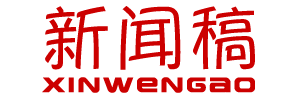Hong Kong, China, September 6, 2018 /Xinwengao.com/ - BT’S NEW AUTOMATION PLATFORM ACCELERATES JOURNEY TO SD-WAN
Customers to benefit from improved visibility and management of their hybrid networking infrastructure
BT announced the launch of a new Service and Network Automation Platform (SNAP) designed to help customers innovate using the latest software defined wide area networking (SD-WAN) and network functions virtualisation (NFV) technologies.
The unique platform sits at the heart of BT’s global network. Built with best-in-breed technologies, its flexible architecture allows BT to fully integrate solutions from its partners. Examples of this include SD-WAN controllers from Cisco and Nuage Networks from Nokia. SNAP also works with Cisco’s Network Services Orchestrator. Together, this allows BT to offer customers a choice of SD-WAN and NFV managed services such as BT Connect Services Platform.
BT plans to extend orchestration from its core network to major third-party cloud data centres and all the way into customers’ local area networks (LAN) and data centre LANs (DC-LANs). This will provide end-to-end applications visibility, control and configuration from customers’ laptops and devices through to servers in the cloud.
To achieve full compatibility between technologies and high levels of automation SNAP has been built using the latest open source software as well as industry standard languages. These include YANG for network modelling and TOSCA for service definition and VNF service chaining. Control commands can now cascade through BT’s systems taking effect within minutes, something that previously could take weeks.
To help customers navigate their future network roadmaps, BT has pooled its SD-WAN and NFV expertise and key skills into a new Centre of Excellence (CoE). The CoE supports the full life cycle of customers’ SD-WAN or NFV services, collaborating across design and deployment to operations. The integrated team is backed with a programme of investment in training and tools in areas such as YANG, Netconf and TOSCA — new skills that are in very short supply.
The CoE, located across BT’s key development and customer support centres, will be able to uniquely monitor the full extent of a customer’s hybrid network creating a single integrated picture using the latest tools based on AI and machine learning. It will be in a positon to rapidly identify applications performance and prioritisation issues within each layer of a customer’s network.
The CoE employs approaches similar to those used in cloud applications development, such as ‘DevOps’ where teams are set up with all the skills and capabilities needed for the full life cycle of a service. It also aligns with ‘Serverless’ cloud, where the design, provisioning and operation of infrastructure that supports an application are fully outsourced to managed cloud services providers.
Keith Langridge, vice president of network services at BT, said: “We’re investing to make it easier for our customer to take advantage of the latest networking technologies and cloud. Our new Service and Network Automation Platform and Centre of Excellence help customers tap into our wealth of know-how and experience in SDN and NFV. We have created a unique environment in which customers can deploy the latest software defined services alongside their underlying network technologies. This transforms their experience of the journey to SD-WAN and makes the promise of software defined services an operational reality.”
BT’s Dynamic Network Services programme is designed to give customers more choice, security, resilience, service and agility in the roll-out of future networks that support digital transformation. The programme helps customers remove barriers to adoption of SD-WAN and NFV by answering questions about which technologies to use as well as when and how to implement, configure and integrate them with existing networks to create hybrid infrastructure fit for the digital age.
ENDS
About BT
BT’s purpose is to use the power of communications to make a better world. It is one of the world’s leading providers of communications services and solutions, serving customers in 180 countries. Its principal activities include the provision of networked IT services globally; local, national and international telecommunications services to its customers for use at home, at work and on the move; broadband, TV and internet products and services; and converged fixed-mobile products and services. BT consists of four customer-facing units: Consumer, Enterprise, Global Services and Openreach.
For the year ended 31 March 2018, BT Group’s reported revenue was #163;23,723m with reported profit before taxation of #163;2,616m.
British Telecommunications plc (BT) is a wholly-owned subsidiary of BT Group plc and encompasses virtually all businesses and assets of the BT Group. BT Group plc is listed on stock exchanges in London and New York.
For more information, visit www.btplc.com

